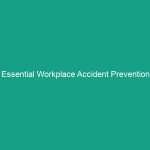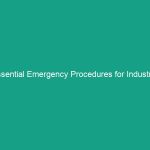Introduction
Good morning team! Today, we’re going to talk about a crucial aspect of our work Environment: Essential Contractor Orientation Programs. The purpose of this Toolbox Talk is to ensure that we all understand the site rules clearly and recognize the importance of our Safety protocols.
Understanding these orientation programs is vital for maintaining a safe workplace. It sets the foundation for how we operate and helps prevent accidents. Let’s dive into why this topic is so important for each of us.
Understanding Essential Contractor Orientation Programs
Essential Contractor Orientation Programs are structured guidelines designed to familiarize contractors and employees with site-specific rules and Safety practices. These programs are crucial in ensuring that everyone understands their responsibilities, potential Hazards, and the Safety Measures in place.
By clearly communicating these rules, we can reduce confusion and promote a safe working environment. A common misconception is that orientation is just a formality; however, it is a critical step that can significantly impact our daily operations and safety.
Key Hazards, Risks, and Safety Considerations
In any workplace, especially in construction and industrial settings, there are specific hazards and risks we must be aware of. These can include:
- Heavy machinery: Inadequate Training can lead to accidents involving equipment.
- Fall hazards: Not understanding safety protocols can result in falls from heights.
- Electrical risks: Mismanagement of electrical equipment can lead to severe injuries.
Ignoring these safety protocols can have real-world consequences, such as serious injuries, legal implications, and even fatalities. It’s crucial that each of us takes these risks seriously and understands the importance of following established guidelines.
Best Practices, Procedures, & Actionable Advice
To ensure that we are all on the same page and to minimize risks, following these Best Practices is essential:
- Attend all orientation sessions: Make it a priority to attend every orientation program. This is where you will learn about site-specific rules and safety Procedures.
- Ask questions: If there’s something you don’t understand, speak up! Clarifying doubts can prevent accidents.
- Review safety materials: Familiarize yourself with safety manuals and signage around the site.
- Follow procedures: Always adhere to the safety protocols laid out during the orientation and be proactive in reporting unsafe conditions.
For instance, let’s consider a past incident where a contractor did not attend an orientation session. They were unaware of the site’s specific Fall Protection measures and subsequently fell from scaffolding, resulting in serious injuries. This highlights the importance of being informed and prepared.
Regulations, Standards, and Compliance
Compliance with safety Regulations is not just a legal obligation; it is an ethical responsibility. Familiarize yourself with relevant Standards, such as OSHA regulations, which outline safety requirements for various work environments. These regulations are designed to protect you and your coworkers.
Understanding these standards is critical because compliance helps prevent accidents and injuries, ensuring a safer work environment for everyone. Failure to comply can lead to costly fines and legal consequences, as well as jeopardize the safety of everyone on site.
Employee Engagement & Discussion
Now, I would like to hear from you. What safety challenges have you encountered related to contractor orientation? Have you ever felt unprepared due to a lack of information? Sharing your experiences can help us improve our orientation programs and enhance safety for all.
Conclusion & Key Takeaways
To summarize, Essential Contractor Orientation Programs play a pivotal role in ensuring that site rules are clear and that every team member understands their responsibilities. Prioritizing safety is not just about following rules; it is about fostering a culture of awareness and responsibility.
Remember, your safety and the safety of your coworkers depend on how well we implement these practices. Thank you for your attention today, and let’s work together to ensure a safe and productive work environment!


